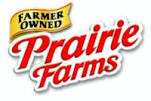07/21/17 – KY High School Basketball Hall of Fame Opens – Celebrating the Essence of the Game
PrintIn celebration of the great work by so many individuals through the Kentucky Association of Basketball Coaches and their allied partners, the KHSAA wishes them the very best of luck as the induct the remainder of their Centennial Class this weekend. In celebration, we gladly present a piece written by Hall of Fame journalist Billy Reed as KABC finishes this step in their long journey to celebrate the essence of the game that led to the KHSAA founding, high school basketball.
“Well, one of my dreams has always been, on a Sunday morning, to be coming home on a fire truck, riding through Shelbyville and holding the state championship trophy with my finger up in the air: ‘We’re number one!’”
— Arnold Thurman, 1966 Shelby County state champs
ELIZABETHTOWN, Ky. — If basketball has more to do with dreams than any other sport, and a convincing argument can be made that it does, surely it has something to do with the jumping.
The other sports are ground games. Oh, I know baseball has its home runs and football has its leaping catches. But essentially they are based on scoring by gaining territory.
But basketball is all about leaping, soaring, reaching for the stars. It’s the stuff of dreams, in other words. By defying gravity, basketball players defy the constrictions that may have been placed upon them by the circumstances of their birth and their family’s means.
The sport goes wrong when money becomes more important than dreams. That’s why basketball at the high school level endures in our neighborhoods, our communities, and our hearts. There is no hero like a high school hero because there is nothing like sharing noble endeavors with family, friends, and neighbors.
The Kentucky High School Basketball Hall of Fame, located on Dixie Highway in downtown Elizabethtown, is dedicated to preserving and promoting this important part of the commonwealth’s culture. It was built with money and materials, certainly, but mainly it was built with love. In Kentucky, the essence of the game is about the values that last a lifetime – teamwork, discipline, unselfishness, and education.
Many wise individuals have noted that basketball has such a hold on the hearts and minds of Kentuckians that it becomes almost a religious experience. It is fitting, then, that the Kentucky High School Basketball Hall of Fame be located in an ancient church that was renovated in order to showcase the essence of the game, Kentucky-style.
On Friday, July 21, the public is welcome to attend a cocktail reception at the Historic State Theater in Elizabethtown, followed by a showing of the movie 32,” advertised as “A Kentucky Basketball Story: Where It All Began.” After the film, representatives of the Hall of Fame will hold a question-and-answer session.
On Saturday, July 22, the Hall of Famer will be open to the public for one day only. It then will be closed for last-minute tweaks until opening full-time on Aug. 12. That night, the 2017 honorees will be inducted at a 7 p.m. ceremony, also at the Historic State Theater. This will complete the inaugural Hall of Fame class of 100 players and coaches, designed to coincide with the 100th anniversary of the Boys State Tournament in 2018.
Many sociologists have tried to figure out why basketball is so revered in Kentucky. One reason, surely, is that the commonwealth always has been a poor state as measured by various socio-economic indicators, and basketball is a sport that doesn’t a lot of room or equipment. So hoops can be affixed to garages and telephone poles. All you need from there is a kid with a pair of sneakers, a ball, and a dream.
Nets come in several varieties – or not at all. They may be made of nylon or chain links. It makes no difference. When a ball drops cleanly through, not touching any rim, it’s “string music,” as the TV analyst Joe Dean had it, in the imagination.
Back in the 1930s and ‘40s, the most popular shots were layups or two-hand “set” shots. The 1950s brought the jump shot, courtesy of Joe Fulks, the member of the Kentucky High School Basketball Hall of Fame who introduced it to the National Basketball Association.
Today it’s about getting to the rim for dunks or firing three-pointers from imagination’s limits. The game has changed, certainly, but the essence remains the same, especially among those players who play for the sheer love of it. The average high school player, the vast majority who never entertain dreams of NBA millions, still sees basketball as one way to getting a college education – and education is both the coin of the realm in America and the hope of its future.
High school basketball taught me a lot.
Consider Kentucky geography. I learned the difference between Mayfield and Maysville. I learned the difference between Owensboro High and Daviess County High. I learned which schools were from the mountains of Eastern Kentucky, which were from the cities, and which were the Purchase Area in the far western part of the commonwealth.
High school basketball taught me that girls, given the right combination of coaching and training, can play the game at a very high and entertaining level. Since the advent of Title IX in 1972, our culture has been enriched by such galvanizing players as Geri Grigsby, Donna Murphy, Lea Wise Prewitt, Lisa Harrison, and Erin Boley, to name only a few.
Perhaps most importantly, high school basketball taught me about civil rights and the racial divide that exists in America to this day.
In 1957, all-black schools became eligible to play in the KHSAA Boys’ State Tournament for the first time. In 1961, Dunbar High of Lexington became the first all-black school to play in the championship game. And in 1969, Louisville Central became the first traditionally black school to win the state championship. The hardships those teams had to overcome is both uplifting and heart-breaking.
Nevertheless, it can be argued that basketball, more than any other sport, has contributed to the American civil rights movement. It could be partly because basketball is an intimate sport. It’s impossible to hide a person’s skin color in a basketball uniform, and the crowd is close enough to the action to see the players’ expressions. In basketball, the jersey a player wears becomes the only color that matters.
I reached for the stars, too.
My goal was nailed haphazardly to the back of the garage at 338 Mentelle Park Extended in Lexington. The court was dirt when the weather was dry, a mosh pit when it rained or snowed, and it was hard to get a true bounce off the dribble.
Shabby? I suppose. But to me it was the glittering arena where I shot hooks like Owensboro’s Cliff Hagan, long one-handers from the corner like Hazard’s Johnny Cox, and slashed to the hoop like Vernon Hatton of Lafayette.
The same scene was more or less playing out in backyards and on playgrounds in all parts of the commonwealth. Only the heroes were different. In the coal mountains of Eastern Kentucky, boys dreamed of being a scoring machine like the immortal “King Kelly” Coleman of Wayland High, and on the inner-city playgrounds of our cities, African-American youngsters were trying to emulate the showmanship of Dunbar High’s Julius Berry or the all-around virtuosity of Covington Grant’s Tom Thacker.
Of course, the landscape has changed remarkably over the years. Many of the small schools – the ones with legendary and romantic names such as Inez, Carr Creek, and Brewers – have disappeared, victims of consolidation. Today many of the best players leave their high schools to play at “academies” designed to put them on the fast track to the big-time colleges and the NBA. The list of coaches who can be accurately described as “legends” has dwindled to a precious few.
And yet…
Go to your neighborhood high school gym on a game night. Listen to the pep band playing. Smell the popcorn popping. Watch the cheerleaders take the floor during timeouts and entertain with what has become a sport within a sport. It’s still much the same now as it was in decades past. Times may change, but the essence of the game remains pretty much the same.
When the Kentucky High School Hall of Fame officially opens, visitors no doubt will be drawn to the players who made it big in college or the pros: Wes Unseld, Rex Chapman, Darrell Griffith, etc. But with all due respect to them, they are no more important, in the larger scheme of things, than the great players and coaches who stayed home to become educators, lawyers, doctors, judges, government officials, and business leaders.
Former Governor Steve Beshear played high school ball at Dawson Springs. Noted Lexington neurosurgeon Bill Brooks played at Henry Clay. Successful business entrepreneur George Tinsley played at Male. And heaven only knows how many former high school players have become teachers, principals, and superintendents across the state.
I’m sure it’s a wonderful thing to be an NCAA champion. I’m sure it’s wonderful to be a lottery pick in the NBA draft. But the Kentucky High School Basketball Hall of Fame isn’t really about that.
It’s about jumping and reaching for the stars. It’s about riding a fire truck down Main Street the morning after the state championship has been secured, waving at the guy who owns the hardware store, the teacher who made you learn algebra, the policeman who found you when you got lost.
That’s not only the essence of the game; it’s the essence of being a Kentuckian.

























